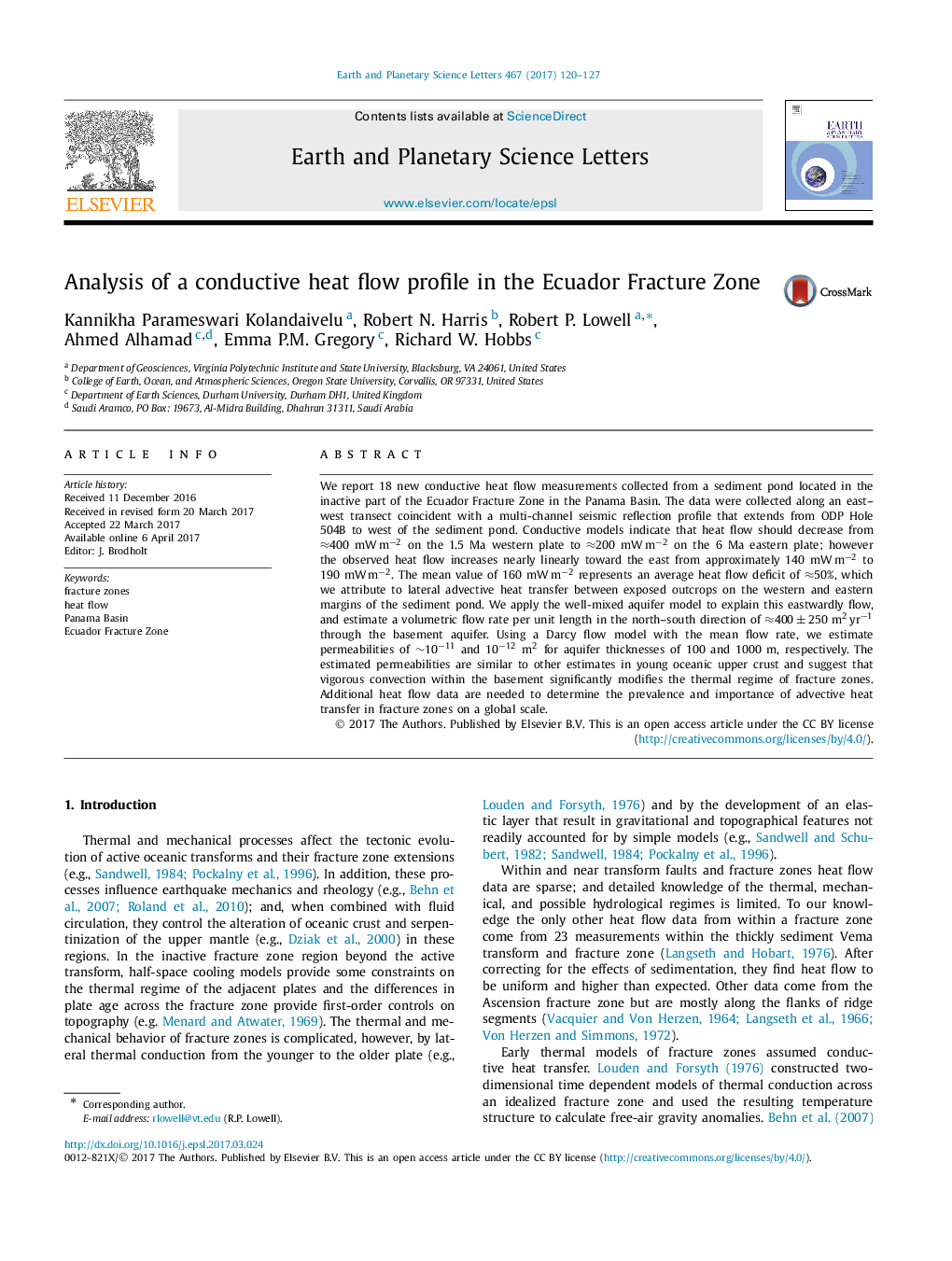| کد مقاله | کد نشریه | سال انتشار | مقاله انگلیسی | نسخه تمام متن |
|---|---|---|---|---|
| 5779945 | 1634689 | 2017 | 8 صفحه PDF | دانلود رایگان |
- Conductive heat flow measured in inactive part of Ecuador Fracture Zone (Panama Basin).
- Significant heat flow deficit in a sediment pond in inactive Ecuador Fracture Zone.
- Well-mixed aquifer model explains linear eastward increase in heat flow.
- Lateral advection - important heat transfer mechanism in fracture zones.
- Aquifer crustal permeability of fracture zone similar to typical upper oceanic crust.
We report 18 new conductive heat flow measurements collected from a sediment pond located in the inactive part of the Ecuador Fracture Zone in the Panama Basin. The data were collected along an east-west transect coincident with a multi-channel seismic reflection profile that extends from ODP Hole 504B to west of the sediment pond. Conductive models indicate that heat flow should decrease from â400 mWâmâ2 on the 1.5 Ma western plate to â200 mWâmâ2 on the 6 Ma eastern plate; however the observed heat flow increases nearly linearly toward the east from approximately 140 mWâmâ2 to 190 mWâmâ2. The mean value of 160 mWâmâ2 represents an average heat flow deficit of â50%, which we attribute to lateral advective heat transfer between exposed outcrops on the western and eastern margins of the sediment pond. We apply the well-mixed aquifer model to explain this eastwardly flow, and estimate a volumetric flow rate per unit length in the north-south direction of â400±250m2yrâ1 through the basement aquifer. Using a Darcy flow model with the mean flow rate, we estimate permeabilities of â¼10â11 and 10â12m2 for aquifer thicknesses of 100 and 1000 m, respectively. The estimated permeabilities are similar to other estimates in young oceanic upper crust and suggest that vigorous convection within the basement significantly modifies the thermal regime of fracture zones. Additional heat flow data are needed to determine the prevalence and importance of advective heat transfer in fracture zones on a global scale.
Journal: Earth and Planetary Science Letters - Volume 467, 1 June 2017, Pages 120-127
